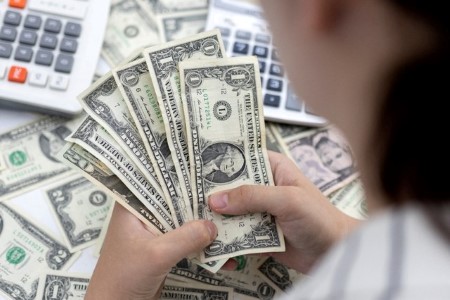




Quarterly Economic Growth Release: More BSP cuts to come
 DOWNLOAD
DOWNLOAD

Monthly Economic Update: Fed catches up
 DOWNLOAD
DOWNLOAD

Inflation Update: Steady and mellow
 DOWNLOAD
DOWNLOAD


Benchmark yield climbs to two-month high after strong payrolls

US 10-year Treasury yields climbed to the highest in nearly two months on Friday after a stronger-than-expected September employment report further weakened the odds of big rate cuts at the Federal Reserve’s remaining two meetings this year.
Nonfarm payrolls increased by 254,000 jobs in September, according to the Labor Department’s Friday employment report. Economists polled by Reuters had forecast a rise of 140,000 after a 142,000 increase in August.
The benchmark 10-year Treasury yield climbed to its highest since Aug. 9 and was last up 13.7 basis points (bps) at 3.981%.
The two-year US Treasury yield, which typically moves in step with interest rate expectations, posted its biggest daily gain since April 10 and rose to its highest since Sept. 3. It was last up 22.5 bps at 3.925%.
The September payrolls increase came alongside a 4.1% unemployment rate, slightly lower than August’s 4.2%, and a tick up in hourly wages.
A closely watched part of the US Treasury yield curve measuring the gap between yields on two- and 10-year Treasury notes, seen as an indicator of economic expectations, was last at a positive 5.5 bps, narrowing from 13.7 bps late on Thursday.
The market has oscillated over the size of an expected second rate cut at the Fed’s November meeting. Despite a 50 bp cut last month, Fed officials have since signaled they are in no rush, a sentiment supported by Friday’s strong labor figures.
Expectations for a 25 bp cut in November skyrocketed following the data, with markets pricing in a 99.8% chance versus 65% late on Wednesday, with a 0.2% chance of no cut at all priced in, according to CME’s FedWatch tool.
“Prior to today’s numbers the question for the market was whether the FOMC would cut by another 50 bps in November or only by 25 bps,” Eric Winograd, US economist at asset manager AllianceBernstein, wrote in a Friday report.
“Now the question is whether they will cut at all or will instead skip a meeting.”
Yields dipped earlier in the week when investors bought safe-haven Treasuries after Iran launched more than 180 missiles against Israel in escalating geopolitical tensions. Domestically, a dockworker strike at US ports which began Tuesday posed an inflation risk, but a deal was reached to end the action late on Thursday.
The 10-year TIPS breakeven rate was last at 2.16%, indicating the market sees inflation averaging about 2.2% a year for the next decade.
The US dollar 5 years forward inflation-linked swap, seen by some as a better gauge of inflation expectations due to possible distortions caused by the Fed’s quantitative easing, was last at 2.471%.
Market participants pointed to consumer and producer price index inflation reports due next week, as well as the coming US elections, as the next big question marks for the economy and interest rates.
“My view is the bond market is going to be rangebound until the elections,” said Subadra Rajappa, US rates strategist at Societe Generale.
“If you get a very strong (CPI) print, I think the market is definitely going to react. But for the most part, I think the market reaction is going to be much more focused on misses.”
In a Friday report, Bank of America economists Stephen Juneau and Jeseo Park wrote, “Inflation continues to move in the right direction, which will allow further cuts. However, we continue to think labor data matters more for size of cuts.”
Jan Nevruzi, vice president of US rates strategy at TD Securities, agreed that next week’s inflation print is unlikely to sway the Fed’s rates path.
“We still anticipate 50 bps of cuts – 25 bps at each of the next two meetings – by the end of the year,” he said.
(Reporting by Matt Tracy; Editing by Kirsten Donovan and Andrea Ricci)
This article originally appeared on reuters.com





 By Reuters
By Reuters